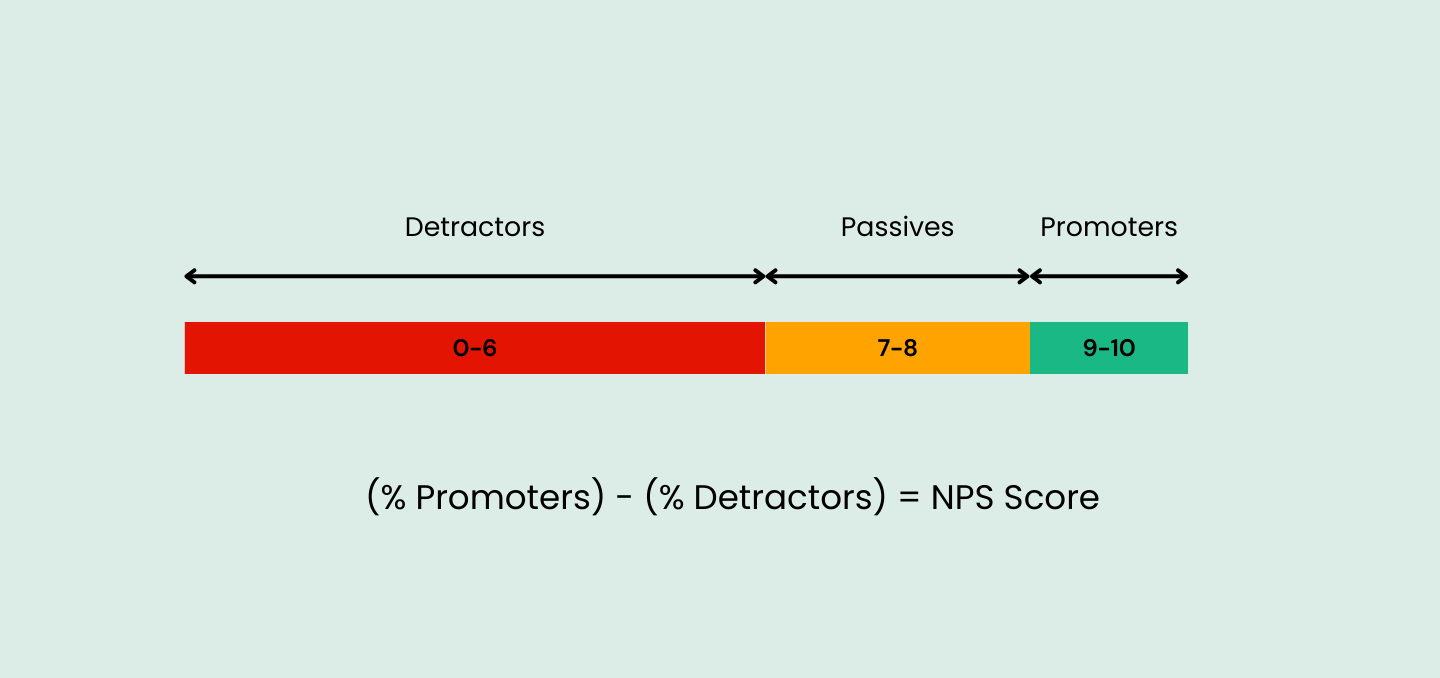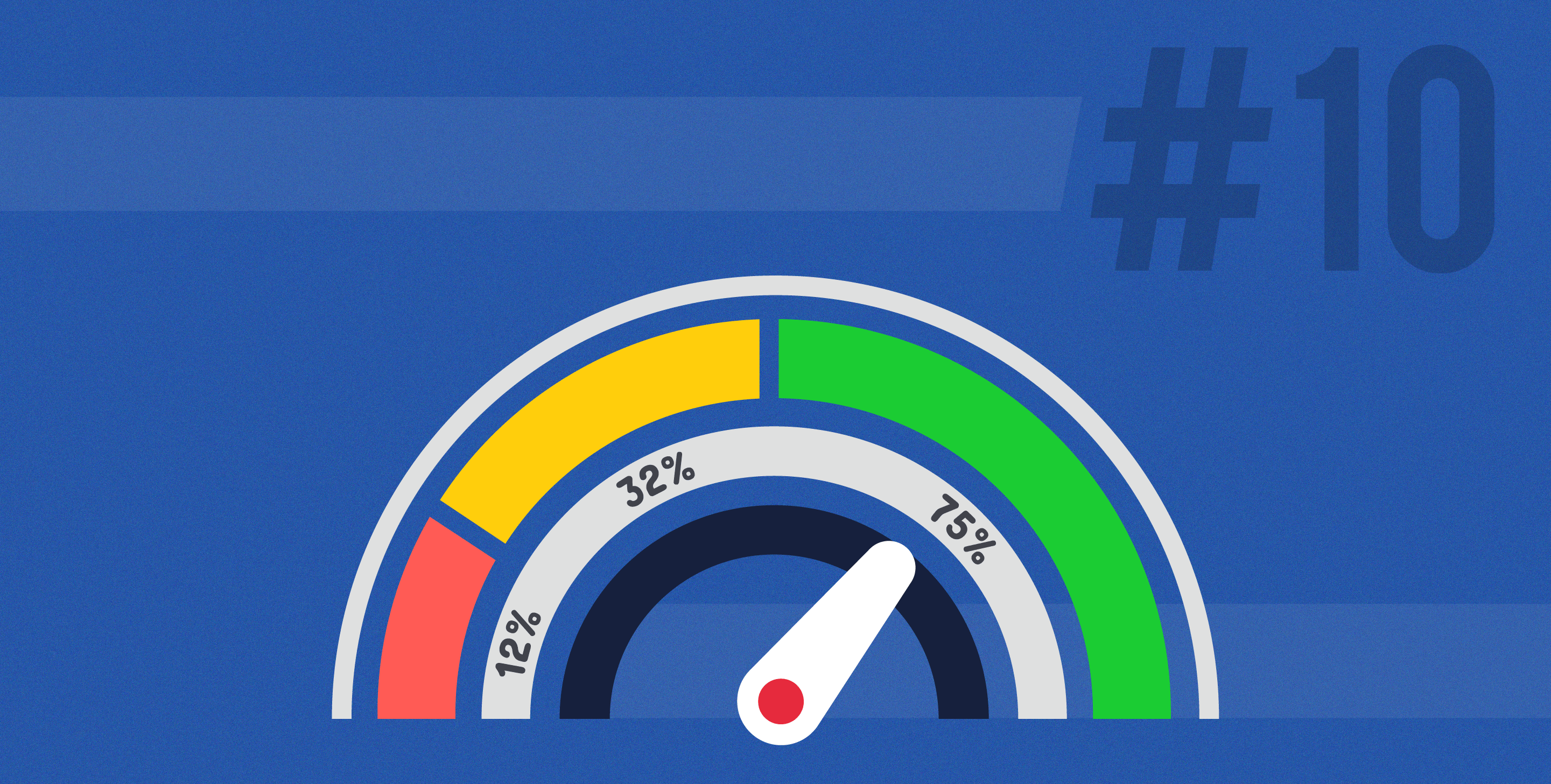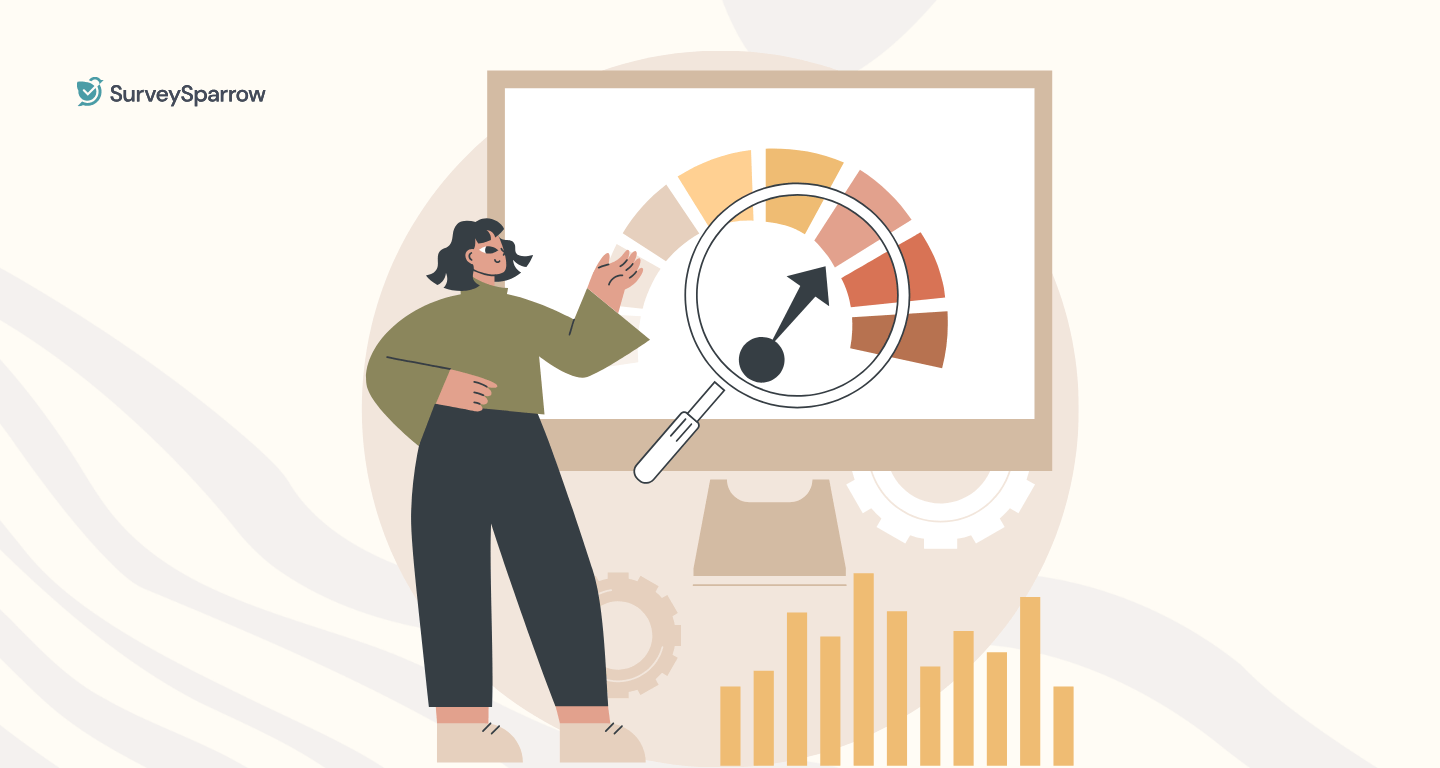NPS
NPS in Retail (2025): Benchmarks, Case Studies & 7 Proven Ways to Lift Loyalty
Article written by Kate Williams
Content Marketer at SurveySparrow
11 min read
19 September 2025

The retail world transformed overnight with the pandemic, doubling digital shopping from 16% to 33% in just three months.
Impressive, right?
But as we’ve settled into this digital norm, simply being online doesn’t cut it anymore. Customers expect more, and to stay in the lead, you’ve got to tune into their needs closely.
This is where NPS comes into play.
It’s a game-changer in retail, turning customers into loyal fans and, even better, into advocates for your brand. And yes, the numbers back it up – higher NPS scores often mean more repeat customers and growth.
There are much and more to discuss. Let’s not waste any time.
What is NPS in Retail?
Net Promoter Score, or NPS, is a crucial metric to gauge customer loyalty and satisfaction. NPS in retail is much the same, but here, it will be focusing only on the retail industry.
It’s calculated based on customers’ responses to one key question: “On a scale of 0-10, how likely are you to recommend our store/product/service to friends or family?”
Based on their ratings, customers are categorized as Promoters (score 9-10), Passives (score 7-8), or Detractors (score 0-6).

If you want to, here’s something to help you understand more about promoters, detractors, and passives.
So, Why Does NPS Matter in Retail?
We have already defined that NPS is crucial for understanding customer satisfaction and loyalty. And these are important in retail, just like any other industry. Moreover, by identifying the NPS score of your retail business, you will also better understand your customers.
Here are some ways identifying the NPS score in retail can be beneficial.
- It shows how likely the customers are to recommend your store or product to others. The higher the NPS score, the merrier the recommendation will be.
- Recommendations mean word-of-mouth referrals. Therefore, you can attract new customers and drive better growth.
- The NPS feedback can provide insights into what your customers love and where you need to improve. This can help you improve their shopping experience.
- A higher NPS score means excellent customer satisfaction and loyalty, meaning increased customer retention.
- A high loyalty score would mean that the customers trust your brand. Therefore, they are more likely to forgive minor errors or mistakes (mistakes are inevitable).
- Having loyal customers means repeat business, which means better financial results.
In essence, NPS is a powerful metric in retail for understanding customer loyalty, driving growth, and improving the customer experience, ultimately impacting the bottom line.
You can experience the impact of NPS on your retail strategy firsthand. Try our retail NPS template now and see the difference it makes in customer loyalty.
Retail NPS Survey Template
Use This Template
So, What Is a Good NPS Score in Retail?
In general, a positive NPS score itself is good. Why? Because an NPS score is the difference between the percentage of promoters and detractors. A positive score would mean there are more promoters for the brand.
Refer to the image below to understand how a good NPS score is considered in general.

But in truth, a good NPS score depends on the average NPS score of the competitors. And the average NPS score in retail is 61. Anything below would mean you are trailing behind and need to up your game.
We will discuss this further in the section where we will benchmark it.
Benchmarking NPS in Retail
| Brand | 2025 NPS | 2024 NPS | Sector |
| Amazon | 47 | 60 | E-commerce |
| Costco | 75 | 52 | Wholesale/Club |
| Apple | 61 | 61 | Consumer Electronics |
| Nike | 47 | 48 | Apparel/Footwear |
| Walmart | 8 | - | Big Box |
| Trader Joe's | 41 | 46 | Grocery (Specialty) |
| Starbucks | 30 | 32 | Coffeehouse |
| Target | 33 | 36 | Discount / Department |
| Best Buy | 43 | -3 | Electronics Retail |
| Home Depot | 21 | 21 | Home Improvement |
| Lowe's | -6 | -4 | Home Improvement |
| SEPHORA | 33 | 35 | Beauty |
| Zara | 17 | 20 | Fast Fashion |
| Aldi(UK) | 38 | 28 | Grocery (Discount) |
| Whole Foods Market | 19 | 19 | Grocery (Premium) |
| CVS Health | 18 | -11 | Pharmacy |
| Walgreens | -7 | -7 | Pharmacy |
| Macy's | -11 | -11 | Department Store |
| Nordstrom | 20 | 20 | Department Store |
| Kroger | 30 | - | Grocery(Mainstream) |
As discussed in the other section, the average NPS score in retail is 61 as of 2025. In the B2C industry, retail comes third, with insurance and financial services holding the first and second positions, respectively.
Retail has experienced a steep climb in its NPS score from 41 in 2022. That’s like 19 points in one year. This showcases the retail industry’s exceptional performance in customer loyalty and satisfaction.
It also highlights the importance of NPS in retail and how customers perceive a retailer’s performance and the quality of the experience provided. You can get a better look at the NPS scores of others in B2C from the following graph.

Moreover, the impact of a good NPS extends beyond mere numbers. Promoters, or customers who are likely to recommend a retailer, exhibit a higher degree of engagement and loyalty.
After careful research, our experts have found the following.
Promoters are
- 2.9 times more likely to make additional purchases
- 4.2 times more likely to trust the retailer
- 4.0 times more likely to forgive a retailer for any mistakes
This underscores the value of maintaining a high NPS in retail.
Do you know what your NPS score is? If not, follow the link to calculate your retail business’s NPS score.
How to Improve NPS in Retail?
Now that you have understood the industry average, you might be thinking of improving your NPS score. If not, just keep in mind that your competitors are constantly striving to outperform you, and they will be considering this. (Not trying to guilt you into this; it’s just essential, that’s all)
So, how can you improve the NPS in retail?

Start by Addressing the Negative Feedback
This is where we focus on the detractors.
The difference between a positive and negative experience is that customers tend to share their negative ones more often than the latter. Therefore, a quick and empathetic response to negative comments can mitigate dissatisfaction to an extent.
Acknowledge the customer’s experience and express a genuine desire to resolve the issue. And that shouldn’t be the end of it. Or, in other words, close the feedback loop.
Once you have resolved the issue, be sure to connect with the customer and let them know.
Why? Mainly for two reasons.
- Firstly, you need to know whether the solution satisfies the customer.
- Secondly, doing so makes the customer feel valued and accentuates the fact that you are committed to providing an excellent customer experience.
Also, provide a solution or compensation for the customer’s negative experience whenever possible. This could range from a refund or exchange to a discount on future purchases.
Analyze and Improve Customer Experience
Another way to improve the NPS in retail is to analyze and improve your customer experience. You can use customer data to offer personalized recommendations, greetings, and promotions. Furthermore, tailoring the shopping experience to individual preferences can significantly enhance satisfaction.
Streamlining the purchase process would be another thing to focus on. Try and ensure the buying process, both online and offline, is as seamless and efficient as possible. This includes reducing checkout times, optimizing website navigation, and providing multiple payment options.
You should also focus on creating an enjoyable in-store atmosphere as well. Introduce music, optimize store layout, or maybe scent marketing as well.
Well-trained, friendly staff who are knowledgeable about products can also make a big difference.
Reach out to Passives
While passives don’t come into the NPS formula, these are customers who can sway both ways. A couple or more good experiences could make them a promoter, while a single bad experience can make them a detractor.
Ergo, you should also focus on Passives to improve your NPS score in retail.
Start by understanding them. Use survey software like SurveySparrow to gather feedback from them. The insights from the feedback will educate you on why they are not fully engaged.
Analyze the results and identify the areas you need to work on. Once you have done that, move on to personalizing the shopping experience. Based on their (passives) preference and purchase history, tailor the offers and communications.
Also, ensure that the customer service is great as well. Train your employees to work efficiently and make sure that they have the knowledge to help the customers. Send personalized thank-you messages or notes for their business.
A simple gesture of appreciation can go a long way.
Building Strong Loyalty Programs
Offering meaningful rewards is another effective way to improve your NPS score.
Create a loyalty program that offers valuable rewards that are relevant to your customers. This could include discounts, exclusive access to new products, or special events.
You can use the loyalty program to create more touchpoints and engage with customers. And while you are it, you can make the offers more personalized and make them feel appreciated and valued.
Just keep in mind to not make the loyalty program complicated. Make it straightforward and easily accessible.
By focusing on these strategies, retailers can enhance their NPS. Remember, the goal is to create a positive, memorable experience that customers are eager to share with others.
NPS in Retail: Best Practices to Follow
To make the most out of your effort, it will be best if you follow the best practices. When done right, NPS surveys can go beyond mere feedback collection. So, here are the best practices to follow to ensure that NPS drives meaningful improvement and growth in your retail business.
1. Use NPS as an Operational Management Tool
It’s obvious what we mean by the title, right? No, well, we were talking about relational NPS surveys.
You can use rNPS to consistently monitor and assess the health of customer relationships over time. Doing so can help you identify and address issues more promptly.
The actionable insights you get from the surveys can be put to use and elevate the customer experience. It can be adjusting the service approach, refining product offerings, or even improving the in-store environment.
2. Get Company-wide Buy-in
Ensure that NPS results and the insights derived from them are shared across all levels of the organization. This transparency helps align efforts toward improving customer satisfaction.
Also, foster a culture where everyone, from entry-level to CEO, understands their role in influencing NPS.
3. Engage and Motivate Your Employees
Employee NPS is something you should consider. By implementing eNPS surveys, you can gauge and improve employee satisfaction and loyalty.
Happy employees are more likely to provide the kind of service that turns customers into promoters. Just like for customers, acknowledge and reward employees who contribute to improving the NPS. This can motivate staff to maintain high levels of customer service and engagement.
4. Tie Your NPS to Revenue and Referral Marketing
Understand the relationship between your NPS and revenue growth. Analyze how improvements in NPS impact customer retention, upselling, cross-selling, and referral rates.
5. Automate Processes
Utilize software and tools to automate the distribution and analysis of NPS surveys. Automation can help reduce manual errors and save time, allowing you to focus on implementing feedback.
The best way here is to invest in robust online survey software like SurveySparrow. The tool will allow for real-time reporting and scheduled reporting and notify you whenever a customer completes a survey. This way, you can swiftly follow up with detractors to resolve issues and convert them into promoters.
NPS Success Story of SurveySparrow
The company was one of the top online fashion platforms in Europe. It connected online shoppers, boutiques, and brands from across the 13 European markets. Business were booming, and they wanted to tap into customer and partner satisfaction through NPS surveys.
What they wanted was to get actionable insights to improve their customer experience, identify areas to improve, and more. Though they had a survey tool for the purpose, it crashed when they scaled. Additionally, their email NPS surveys were rigid and static as well. As a result, it limited their ability to be flexible with the content they provided.
The solution to all their problem vanished when they selected SurveySparrow.

The result was staggering. The company was able to
- Double down on the responses received
- Improve insights into what is working and what’s not
- Better understanding of customer and partner satisfaction.
Read the complete success story on how SurveySparrow helped the company by following the link. Looking for an NPS survey tool for your retail business? Look no further than SurveySparrow.

Explore Deeper Customer Insights with SurveySparrow
A personalized walkthrough by our experts. No strings attached!

Get up to 40% more NPS responses and finally understand what drives loyalty.
Kate Williams
Related Articles

NPS
How to Use Employee Net Promoter Score To Drive Culture
14 MINUTES
13 January 2021

NPS
11 NPS Best Practices to Follow in 2025
17 MINUTES
24 January 2020

NPS
Healthcare Net Promoter Score: Meaning, Calculation and Benchmark
10 MINUTES
7 February 2024

NPS
The Advantages and Disadvantages of Net Promoter Score (NPS)
15 MINUTES
8 February 2021
